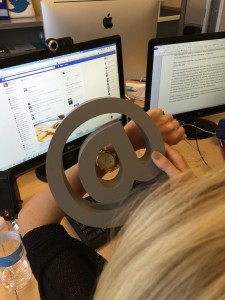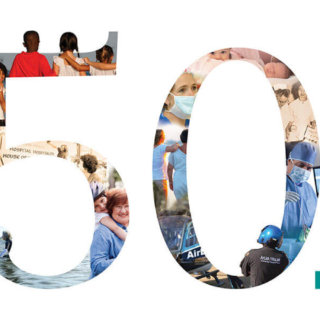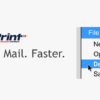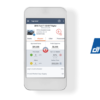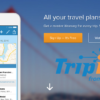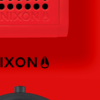Social Media and Procrastination
I have a confession to make. I once stayed on Pinterest for 5 hours straight in order to put off writing a paper for one of my journalism classes. Impressive, right? Well here’s another fact for you: during the day I find myself constantly scrolling through my social media feeds even when I know that I have other tasks that I need to accomplish. But I don’t stop. And I’m not the only one. Millennials everywhere are staying continuously “plugged in” now more than ever, so it is no surprise that when the majority of us are surfing the web it is on the sites that have grown up with us- social media outlets. With the constant updates that social media sites provide, they foster the perfect environment for the trait that the most of us share- procrastination. For this blog post I will examine #1) why social media outlets are the preferred choice of procrastination for millennials and #2) how businesses can take advantage of this behavior.
Science of Social Media Habits
Procrastination defined by Merriam-Webster is intentionally putting off the doing of something that should be done, and is a common phenomenon in all ages, especially millennials. But why is social media the go to when we don’t want to complete a task? There are a few answers. The first has to do with human nature in general. One of the most primitive needs as a human is social interaction. An article written by Steve Tobak explores the psychology behind social media addiction. After illustrating typical social media addict behavior, Tobak explains in detail how the human brain’s limbic system (which controls our basic needs) cannot differentiate between in-person and digital social interactions. This means that quick, easy social media interaction is becoming a placeholder to fulfill the social interaction needs that we necessitate as humans. Social media sites, as far as our brains are concerned, are actually fulfilling basic human needs.
As procrastinators unaware that we are trying to fulfill the limbic system needs, we normally want two things: to see what our friends are up to, and to knowwhat our friends are talking about. Then we figure out how to get involved. Social media sites provide constant entertainment to users through gaming, chatting, scrolling through pictures and videos,etc. When people repeatedly engage in the same activities (like most millennials do with social media), they start to form habits. When the habit involves being constantly entertained, it provides a reliable fallback for users when other tasks aren’t as entertaining (classwork, research, chores, etc.). The immediately accessible entertainment and human interaction opportunities available on social media make these channels an obvious (and sometimes even unconscious) destination for procrastination.
Business Implications
So what does this mean for businesses? According to Mediabistro, there are 1.28 billion monthly active users on Facebook, 540 million monthly active users on Google Plus, 255 million on Twitter and around 200 million for Instagram and LinkedIn. Clearly there is a huge potential for businesses to tap into advertising with Millennials that are constantly on social media. The tricky part is engaging with them through all of the noise that the sites depend on. Here are some key considerations to keep in mind when formulating a marketing strategy that capitalizes on millennial procrastinators on social media:
1.Pinterest is a journey, not a destination
- All hail the power of the repin. No, but seriously. Pinterest is one of the greatest social media sites for businesses due to the ability to link a pin to their product or website and directly drive consumers exactly where they want them to go. However, when someone gets on Pinterest it is important to understand that they are not looking for a certain pin, but multiple pins in the same theme. While some people may get on the website with the intention of compiling a board with a specific focus (i.e. finding home décor ideas), they will inevitably stumble upon pins outside of this focus that appeals to their other interests. For example, a newly engaged woman may log on with the goal of making a “home décor board”, but log off having pinned pictures to her dream getaway board, her shedding for the wedding board, as well as her fall fashion board. Unless users are specifically searching using keywords in Pinterest, they are scrolling through their home feed. So here is the takeaway: you don’t necessarily need to have thousands of followers on your home page, but your pins need to be specific to your brand and what you want to sell. You want to invest in quality images and make the content repin-able so that it is popping up on as many home feeds as possible, and reaching as many people as it can.
2. If your videos are over 2:00 long I’m not watching it
- The average attention span of a goldfish is nine seconds. The average attention span of an adult in 2013 according to the Statistic Brain is eight seconds. That’s right, people. A goldfish can pay attention to something longer than we can. This being said, videos on social media should (for the most part) be as short as possible. While we understand that powerful videos may be longer than a minute, the content must keep us engaged for longer. For the most part, try and stay around 15-59 seconds for creative content, which TheNextWeb says is the average length of time you have with consumers in order to get your message across before they lose interest. Take advantage of Instagram videos that only last for 15 seconds, and hyperlapse applications that allow you to show longer events in a short sped up format. Bonus points if you pair it with a trending song by using apps like Lomotif or Flipagram.
3. Content should be created in hopes of me sharing it to my friends
- We aren’t using social media sites to shop, we are using them to see what’s going on in the world and interact with people about topics we care about. Instead of constantly promoting themselves in the traditional “Check out this great new ____” way, businesses should be creating content that we want to tag our friends in. So what is it that we want, exactly? We want to see powerful images and statistics, entertaining videos, drama, and humor that are relevant to the here and now.
4. I want more friends, followers, and shoutouts and you can give me what I want.
- This concept is easy enough. If you’re a company that I follow and you reach out to me, I will freak out with excitement and screenshot, retweet and share it with my friends. Basically, it opens the doors for people to start or strengthen relationships with your brand. Companies often forget how important interacting with consumers via social media can be, even if it is conducted through using a basic hashtag search on twitter. Make sure that your brand favorites and replies to your followers tweets in order to strengthen that brand-customer relationship and turn them into your advocates. In order to find the best followers to contact, it is essential to run analytics to ensure the furthest reach potential. Keep in mind that interactions with the “little guys” matter too!
5. Most importantly remember that social media is a fun escape from reality and posts should be catered around this idea
- If you are constantly pushing products down our throats, stop. We won’t be interested. While it is obviously essential to market what you are selling on social media sites in order to generate awareness about your company or your products, keep in mind that millennials (especially procrastinators) aren’t on social media for solely shopping purposes. When you only post about you wanting us to buy your products, it becomes spammy. We don’t like spammy. Keep it relaxed on social media and show your brand personality. Give us something that takes us away whether it is through information that has prominence, human interest, significance, timing, or entertainment all in an interesting way. If you mix it up, and we like what we see, you will stay in our news feeds. Then, when it is time to launch a product, we will be more apt to pay attention- we trust you for entertainment.
As with all things in marketing, capitalizing on millennial social media procrastination will depend on your ability to understand your target market’s needs and interests- so go ahead and give them what they want- a distraction worth talking about!
About Morgan Jones
Morgan is a graduate from the University of North Carolina Wilmington with a BA in Communication Studies and a minor in journalism. She brings to the table a vivacious spirit and unique creative energy that she uses in all things SayItSocial. When she isn't being an awesome Digital Account Executive, you can find her running the Wrightsville Beach loop with her dog Grizzly, out on the beach, or on her front porch reading her nook.
- Web |
- More Posts (22)

Like What You Are Reading? Subscribe To Read More
Join our mailing list to receive the latest news and updates from our team.
